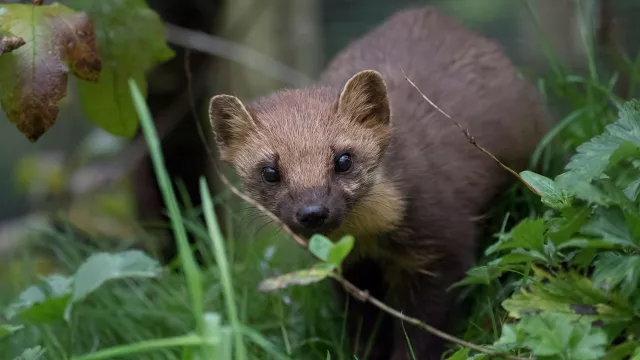But it’s not all doom and gloom, and from rewilding initiatives to species reintroductions, there are still reasons to be cheerful.
Here are some startling success stories for British and Irish conservation in recent years…1. Red Kite
(iStock/PA)
Touted by the RSPB as “the biggest species success story in UK conservation history,” the red kite comeback has exceeded all expectations with its speed and scale. In 1990 the birds of prey were extinct in Ireland and down to dozens in the UK, but the release of 13 young kites in the Chiltern Hills near London heralded an ambitious reintroduction programme that has seen numbers skyrocket.
A similar scheme in Scotland has seen success too, and overall red kite numbers in the UK are now estimated to total more than 10,000 birds. In 2007, nestlings from Wales were released in County Wicklow, and 2010 brought the first red kite chicks in Ireland in more than two centuries.2. Pine Marten
Another success story is in Ireland where pine martens have seen a recovery everywhere from County Clare to Gloucestershire in recent years. Relegated to rare sightings in Western Ireland in the 1980s, martens have since turned up in woodland in almost every county, though they remain extremely difficult to spot.
Close relatives of the stoat and weasel, these largely nocturnal hunters were persecuted quite ruthlessly in Scotland due to their habit of preying on game birds and poultry, but a new raft of protections has seen them recover since the turn of the century, and they now number around 4,000.
(iStock/PA)
(iStock/PA)]https://content.assets.pressassociation.io/2020/07/22151715/e43651fe-f541-4a35-bb6e-1ab87e870d4e.jpg[/imgcap]
Ireland hosts the majority of the entire European breeding population of roseate terns, so alarm bells were ringing following a population collapse through the late 20th century. Of particular concern was Rockabill Island, a haven for sea birds off the coast of Co Dublin and Europe’s largest roseate tern colony, which dropped to just 180 breeding pairs at its lowest ebb.
A wildly successful conservation project ensued, and a combination of nest boxes, gull control, and habitat improvements have seen the population rebound to 1,500 pairs, as of 2017. If the red kite is the UK’s finest moment for bird conservation, then the roseate tern might just be Ireland’s.4. Beavers
Once widespread in England, Scotland and Wales, Britain had been beaverless since the 16th century, when the rodents were relentlessly hunted for fur and meat. A “keystone species” that can positively impact biodiversity and water quality, in 2009 a family of beavers was released in Knapdale Forest, Argyll, and has been thriving there ever since.
The reintroduction received an unexpected boost when a small colony turned up on the River Otter in Devon (it was granted a license retrospectively), and there are now plans to return the rodents to Wales.
Always restricted to mainland Britain, beavers were probably native to Ireland before the last Ice Age, but the same could be said of woolly mammoths, spotted hyenas, and an enormous species of deer.5. Osprey
Long a favourite for wildlife filmmakers thanks to their striking plumage, even temperament, and aquatic hunting habits, ospreys were wiped out in Britain and Ireland during 1800s by taxidermists and egg collectors.
(iStock/PA)
They returned to Scotland seemingly of their own accord in the 1950s, but it was Operation Osprey (the RSPB initiative, not the 1942 Nazi plan to occupy Ireland), that cemented their place among UK fauna, and artificial nesting sites and round-the-clock surveillance helped 300 pairs establish themselves across England, Scotland and Wales.
Though regularly spotted migrating over Ireland, conservationists are yet to convince the birds to settle and breed.







